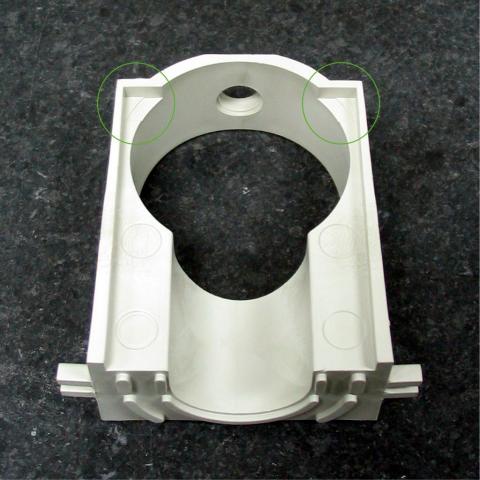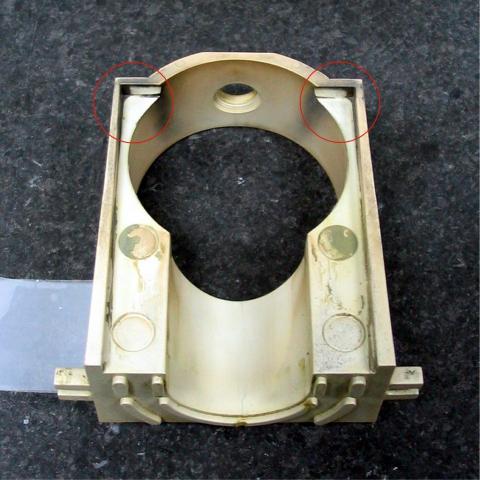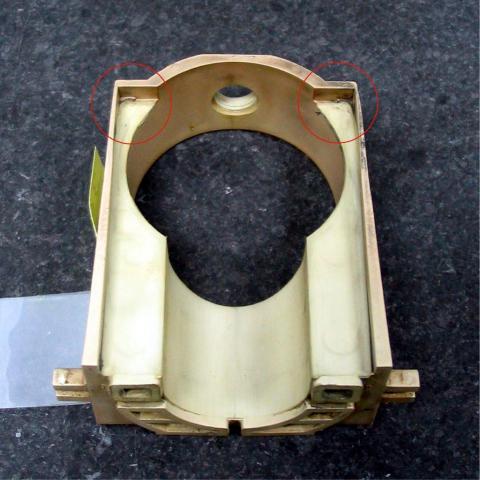BST36 Slide Guide Wear Indicators
Mikuni BST36 slide guides
New. Notice the 0.010" deep depressions in the bottom corners concentric to the bore (circled in green), as well as the four circular depressions.
Contrast this with the following two pictures of worn guides. The first wear example shows a guide at 8,300 miles (13,358 km). Wear has exceeded the depth of the depressions at the lower end of the slide excursion/concentric to the bore (normally found in the areas circled in red). Note the plastic dust in the circular depressions. Maximum measured wear is ~0.020" (0.51 mm). Emulsion tube wear ensues rapidly when the slide guide has worn beyond ~0.010" (0.25 mm); that is, once the depressions within the areas circumscribed by the colored circles have worn away. If these depressions have not been worn away, their remaining depth can be measured with the tail of a caliper. Wear per 1,000 miles (1,609 km) for this example at is 0.0024" (0.06 mm), indicating that the guides should be replaced approximately every 4,170 miles (6,711 km). The third photo shows a guide at 36,000 miles (57,936 km). The depressions at the lower end of the slide excursion/concentric to the bore (once again normally found in the areas circled in red) as well as the four circular depressions are worn completely away. Maximum wear measures 0.075" (1.90 mm). Wear per 1,000 miles (1,609 km) for this slide guide is 0.0021" (0.05 mm), indicating that the guides should be replaced approximately every 4,750 miles (7,644 km). Averaging between this example and the 8,300 mile (13,358 km) example yields 4,460 miles (7,178 km). Therefore we recommend a BST36 slide guide inspection at approximately 4,000 miles. Qualifier: slide lift hole area affects slide guide wear. The greater the lift hole area, the faster the wear. Lift hole area varies for BST36 slides depending upon make, model and year. These measurements are based on an example with the BST36 slide with the greatest lift hole area.



